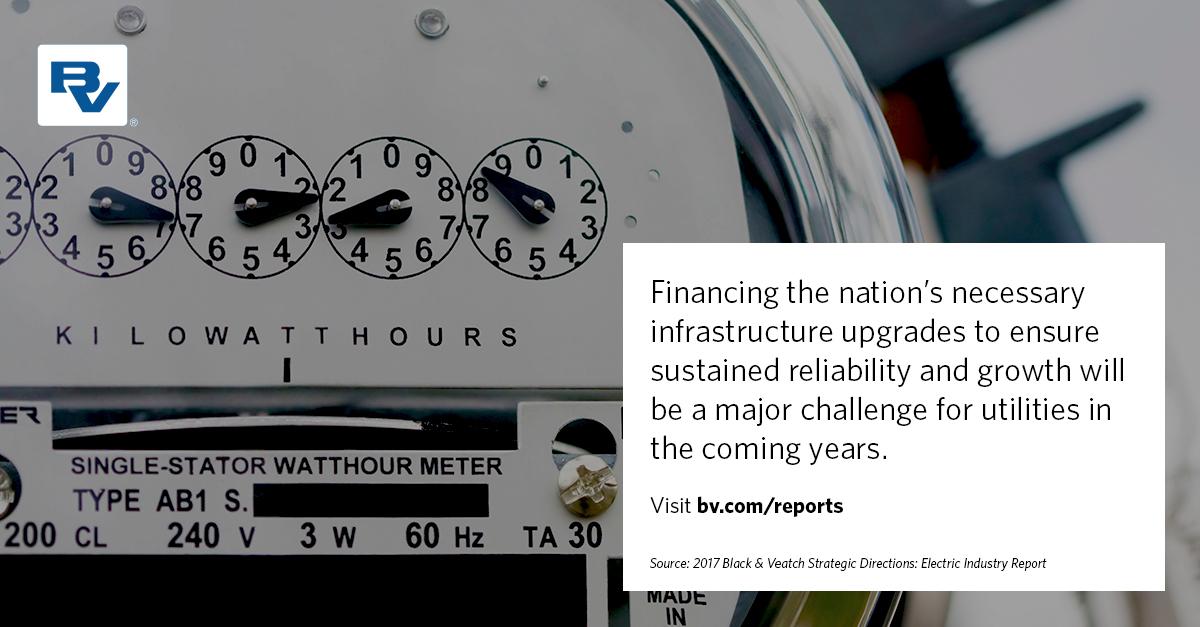Electric Industry Leaders Planning Capital Investments
Financing upgrades to the nation's electrical infrastructure is a looming challenge

While the White House’s plans for a $1 trillion federal infrastructure program continue to coalesce, one recent estimate puts the depreciated value of the American electric infrastructure—including power plants, transmission lines, distribution lines, substations and transformers—at around $1.5 trillion to $2 trillion, with a replacement value of $4.8 trillion.
Wherever the actual costs may fall, it’s clear that financing the nation’s necessary infrastructure upgrades to ensure sustained reliability and growth will be a major challenge for utilities in coming years. According to this year’s survey results, long-term investment, reliability and aging infrastructure appear as three of the industry’s top five fundamental concerns.
Combined, the latter two issues were listed as a top driver of utility transmission investments by almost twice as many survey respondents (60 percent) as those that listed increasing capacity/load growth (34 percent). Despite the costs, more than 45 percent of respondents plan significant capital investments (over $25 million) into their systems in the coming two years.
Learn More - Download the 2017 Electric Industry Report
This demonstrates confidence in their ability to secure funding for these improvements, most of which will come through corporate debt, with equity issues, government investment and cash balances accounting for much of the remainder.
Many utilities, especially investor-owned utilities (IOUs), will continue to build and finance on the balance sheet, with equity investment as needed, as they can still make these kinds of investments and enjoy regulated returns and timely cost recovery. While this mostly traditional funding model holds true at the large scale, much of the funding for advanced technologies such as distributed generation, storage and load balancing will happen on a smaller scale, allowing for more flexibility in funding models. For example – put a few small generators behind the meter from a new solar PV installation or CHP facility, capable of pushing power back to the grid and you’ve created a very different dynamic.
These new technologies—many coming from the solar, automotive and information technology sectors—are not only helping decentralize the generation and storage of power; they are also creating significant local economic opportunity. The combination of new technologies creates new dynamics like demand stabilization, which alongside merchant power plants, renewable electricity portfolios and other new developments are significantly altering the power sector landscape.
This evolution of the power sector is leading to changes in finance models. While both IOUs and their counterparts publicly-owned utilities (POUs) finance new projects on their balance sheets, their funding models differ in a few important aspects, especially in cost of capital. But they also differ in rating agency evaluations due in part to the lengthy cost recovery process many IOUs experience. Finally, as The Electricity Journal points out, the investor mix also differs, with 50 percent of POU investor dollars coming from households.
Most new plants approved in California are merchant power plants, and the funding models of the independent power producers (IPPs) behind them can vary dramatically from those of POUs or IOUs. Whichever model merchant plants and the smaller distributed projects we’ve spoken of may adopt, there is a clear trend for merchant plants away from financing on the balance sheets toward more complex, non-recourse and innovative models.

